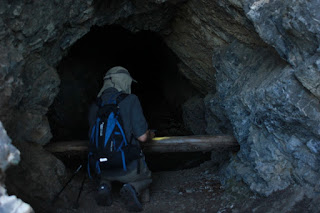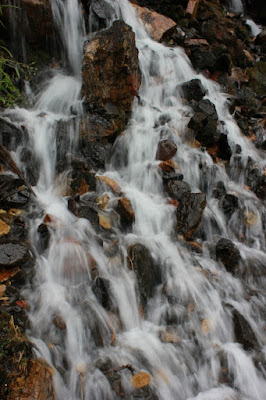The trail begins off of the same trailhead that goes to Donut Falls. It's rated as difficult and main challenge is a 2,874 foot elevation gain in about 2.2 miles. That's according to alltrails.com. We measured the distance at just over 5 miles. It's very steep.
Much of the trail is in the shade, which is a plus considering the extreme exertion you are under when climbing it. Trekking poles are recommended, especially on the way down. Once at the top you will be rewarded with amazing views of Broad's Fork Twin Peaks, Dromedary, Mt. Superior, Mt. Raymond, Gobblers Knob, and the backside of Mt. Olympus. You can even find Sundial Peak if you know where to look.
Getting there:
From the bottom of Big Cottonwood, drive up about 8.9 miles to where there is a large parking lot along the road on both sides. On the right is the turn off for the Donut Falls trailhead. There is often parking available right at the trailhead, so it's worth taking a look, especially early in the day. The trailhead is about .8 miles on this side road. Girl on a Hike has a good description of how to find the actual trail here: Clickety-click
Trip Report
Three of us began this hike. Myself, Robert, and Luke. I being the oldest, age 60, began huffing and puffing from the beginning. I had asked some folks previously if this hike was as tough (meaning steep) as the really steep part of the Jacob's Ladder route to Lone Peak. I was having a hard time making myself understood as to just exactly where I meant. I found this hike to be not quite as steep as that, but steep enough to keep me stopping to catch my breath, especially as we gained elevation.
Part way up we saw an old miner's cabin and just past it, a mine that went back in a ways. I hadn't brought my flashlight or headlamp along and the small cell phone lights were ineffective at showing how far back the mine went in. If I ever do this hike again, I'll bring one. On the way down, we met some guys who were familiar with the area and they told us there was one place where there's a tunnel all the way through the mountain. There may be a cave troll there though, so beware.
 |
| What remains of an old cabin near an abandoned mine. |
 |
| Robert examines the mine. |
Once on top the views were amazing. I sat down and ate a Clif Bar then took a few pics. Soon it was time to go down.
 |
| Robert checking out the views with Dromedary Peak and Broad's Fork Twin Peaks visible. |
 |
| Toward Little Cottonwood and Mt. Superior |
 |
| Luke and Robert checking pics and maps |
 |
| The upper Cardiff area above Donut Falls |
 |
| Mt Raymond and Gobblers Knob to the north. |
 |
| The backside of Mt. Olympus and the Salt Lake Valley |
 |
| Dromedary and Twins |
The steepness on the way down was tough too. I was glad I had the poles as they saved me from falling on my rear end a time or two.
As we ended, Robert, who at 51 is a very experienced hiker who gets out frequently, commented that even his calves had begun burning. As for me, my calves had given me trouble on the way up, and my quads on the way down. For me, I'd rate the difficulty as pretty extreme. The good news is, stepping up my workouts to prepare for steep hikes kept me from having severe muscle pain a day or two later. Sure, I ached a bit, but not like I normally do. I really do recommend if you can't actually get out and hike a lot, that your gym workout include step climbers and treadmills with increasingly steep angles. And some plyometrics are helpful too. Preparing yourself to do hikes like this is part of having a great adventure.
















